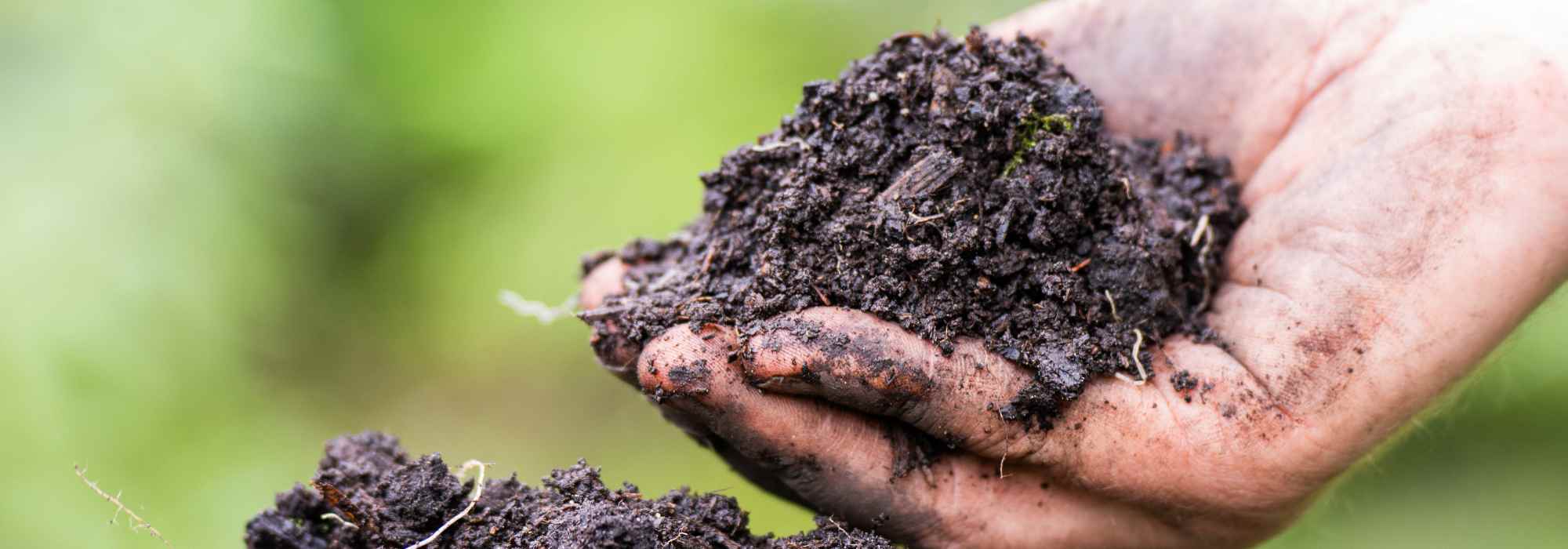
How to enrich your soil naturally with organic amendments?
Which soil amendments to choose and prefer for your garden or vegetable patch?
Contents
When looking to improve your harvest or the growth of your plants, fertilisers often come to mind, but soil amendments frequently provide solutions even before fertilisation. The amendments used in the garden are either mineral or organic, and in this article, we focus on the latter. From the well-known, such as compost or Bokashi, to bat guano, what organic amendments are available to us? Which ones should you use?
We answer these questions by outlining the benefits and drawbacks of different amendments.
What is a soil amendment?
A soil conditioner is a material of plant, animal or mineral origin added to the soil to improve its physical, chemical and biological properties.
Unlike fertilisers, which directly provide nutrients to plants, organic soil conditioners enrich the soil in the long term to boost its productivity. They play a crucial role in overall soil health by improving its structure, water retention capacity and promoting aeration, thereby enhancing microbial activity.
Organic soil conditioners are derived from living or once-living materials, such as manure, compost or certain plant residues. They add organic matter to the soil, contributing to humus formation, essential for soil fertility and stability. By incorporating these materials, soils become more alive, better aerated and capable of retaining more water and nutrients, while being more resistant to erosion.
Their environmental impact should not be overlooked either: they reduce organic waste, help prevent soil erosion and carbon sequestration, and can be used in organic farming.
All soils need conditioning, especially heavily planted areas or vegetable gardens, which absorb large quantities of nutrients and become depleted more quickly. A single application of fertiliser will never be sufficient if the soil cannot absorb these elements: this is where soil conditioners play such a vital role in our gardens…
→ Also read The role of humus in soil fertility and Fertiliser or soil conditioner: what’s the difference?
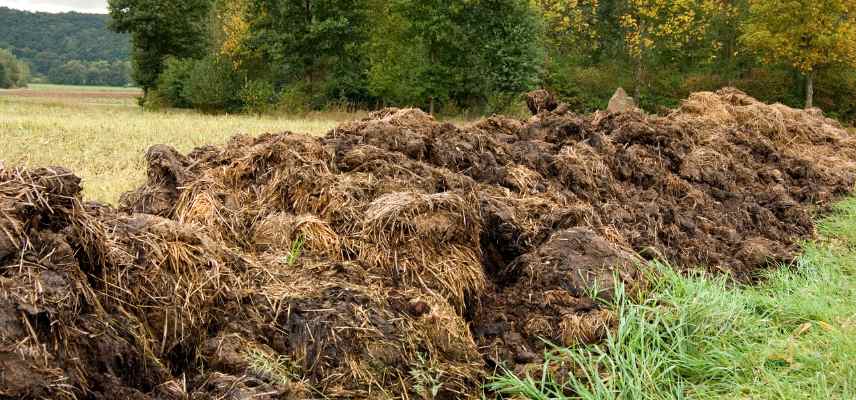
The manure heap: a boon for our gardens and vegetable plots
Different Types of Organic Soil Amendments
Most organic soil amendments are easily found or can be made at home, a considerable advantage compared to some commercial fertilisers. Here are the most effective amendments for our gardens, suitable for permaculture.
Manures
Manures are rich in nutrients and improve soil structure. They are typically incorporated into the soil in autumn to allow optimal decomposition before spring sowing. Well-composted manures significantly enhance soil fertility. The most common types are horse, cow, sheep, and poultry manure. Pascale explains in detail the different types of manures in her article.
Their benefits: they are rich in nitrogen, potassium, and potash; they are highly recommended for vegetable gardens and improving heavy soils; they should be applied every two or three years after the first application.
Their drawbacks: poorly decomposed manure can burn plant roots… Its odour may be unpleasant, especially for neighbours if you don’t live in the countryside; it can be hard to obtain for city dwellers.
N.B.: Dried versions are convenient for urban gardeners or small gardens. These dehydrated manures come in pellet form, which Olivier presents in this video.
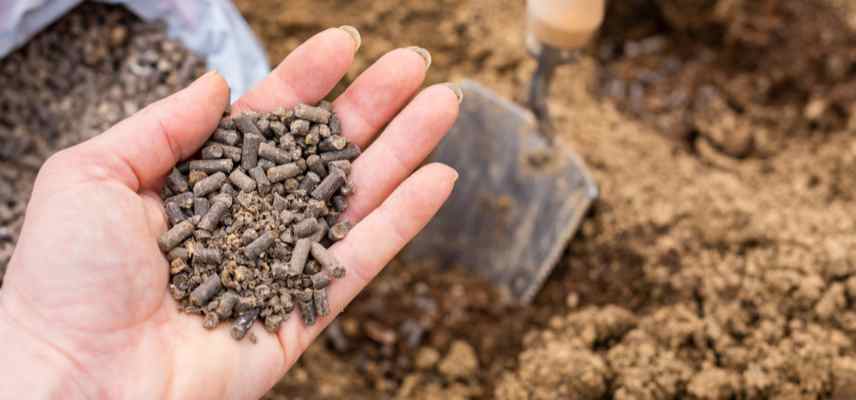
Compost
This is the gardener’s black gold!
Made from composting organic waste like food scraps, grass clippings, dead leaves, and small branches, it is rich in humus and slightly moist. This decomposed organic matter, broken down by microbial activity, is highly effective for improving clay soils: microorganisms do their work, and humus gradually forms. Many soil structures improve significantly just by adding compost.
Compost is very useful as a material to mix with most of the organic amendments listed here.
♥ Its benefit: it costs nothing, just trips to the compost bin and a bit of time to turn it regularly! It reduces organic waste and sustainably enriches the soil with organic matter.
⇓ Its drawback: it must also be well decomposed and requires some expertise in the composting process to prepare it properly and obtain good compost.
N.B.: vermicompost (or worm compost) is a type of compost produced more quickly, relying on earthworms to break down organic waste into a nutrient-rich amendment. It is often practised indoors in specially designed bins, allowing precise control of temperature and humidity. It requires careful management to maintain optimal conditions for the worms and is thus slightly more complex to set up.
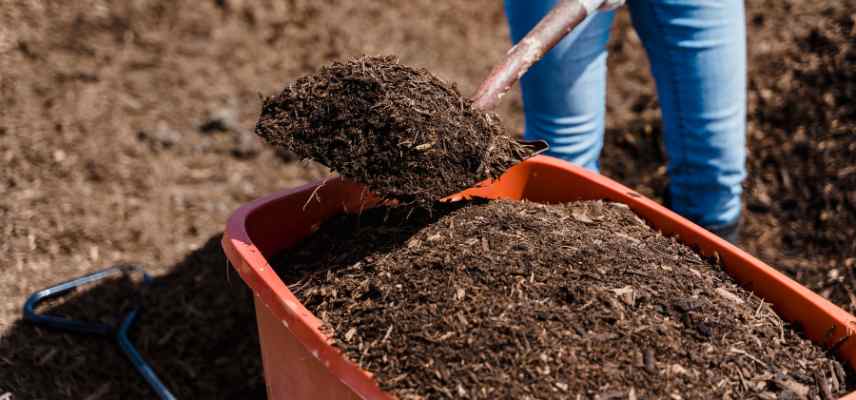
Straw and Hay
Chopped straw is mainly used as mulch to protect the soil and retain moisture in vegetable gardens. More fibrous, it decomposes slowly, enriching the soil with organic matter and promoting microbial activity. However, it consumes a lot of nitrogen. Hay decomposes faster and is thus more advantageous in this regard. Ideally, mix straw or hay with soil and/or compost three or four weeks before use to ensure better decomposition.
♥ Their benefits: straw promotes microbial activity; hay improves water retention and is rich in nutrients.
⇓ Their drawbacks: decomposition is relatively slow; straw can acidify certain soils.
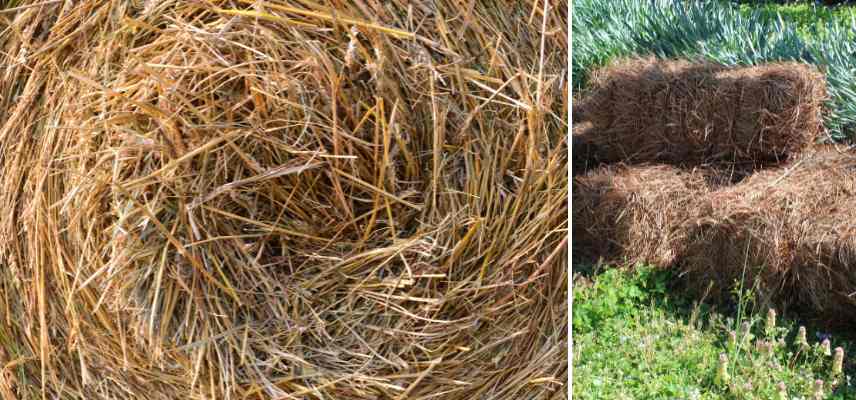
Dead Leaves and Leaf Mould
Dead leaves decompose at varying rates to form humus, improving soil structure and water retention. They can be used as mulch or incorporated directly into the soil once decomposed. Leaf mould, made from decomposed dry leaves, is an excellent source of organic matter.
♥ Their benefit: it’s a free, renewable amendment, easy to obtain if you’ve planted enough deciduous plants.
⇓ Their drawback: tough leaves (oak, mulberry) decompose poorly and should be shredded or avoided (e.g., walnut leaves); if not properly decomposed, they may harbour pathogenous organisms.
→ Also read: How to Make Good Leaf Mould?
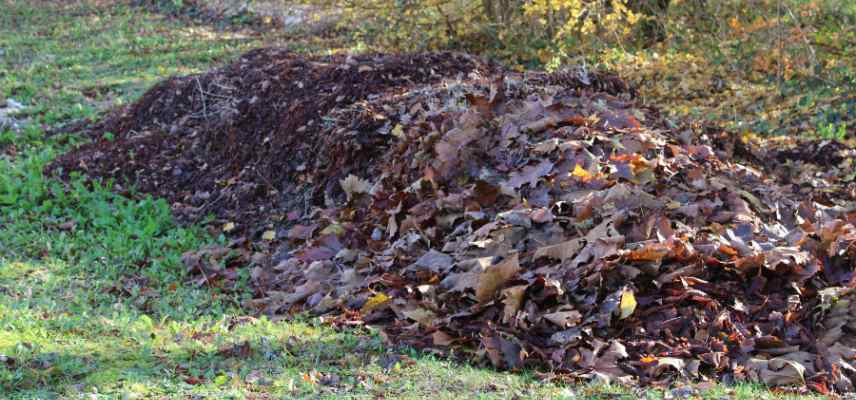
Ramial Chipped Wood (RCW) and Wood Chips
RCW (ramial chipped wood) is particularly effective for improving soil structure and stimulating microbial activity. It consists of freshly chipped wood (branches from bushes and trees). It decomposes slowly, gradually releasing nutrients and improving water retention and soil aeration. Ideally, wood chips should mature for at least 1–2 years before being incorporated into the soil to avoid nitrogen depletion.
♥ Its benefit: easy to make at home with a wood chipper; it effectively improves the structure and aeration of clay soils; it provides cooling during dry spells.
⇓ Its drawbacks: decomposition is quite slow; when used fresh, it consumes a large amount of soil nitrogen, temporarily depriving plants of this essential nutrient → Also read Nitrogen Depletion: What Is It? How to Prevent and Remedy It?
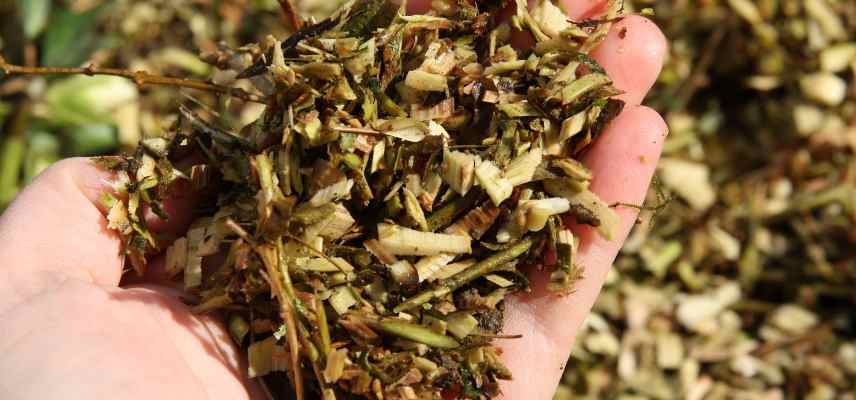
Seaweed Extracts
Used as a base fertiliser, they are rich in organic matter, nutrients, and minerals and enrich soils with beneficial microorganisms. They are sold as pure seaweed powder or seaweed pellets, which correct calcium deficiencies, or in organic manure blends. Seaweed is typically derived from knotted wrack (Ascophyllum nodosum). They are worked into the soil like other amendments. In coastal areas, you can add seaweed to compost or use it as mulch, after minimal rinsing and harvesting sparingly!
♥ Their benefits: seaweed has a long-term effect on soils; they are highly concentrated bio-stimulants rich in trace elements, promoting plant growth, and only require application every two or three years.
⇓ Their drawbacks: they are quite expensive; they may contain heavy metals if not organic.

Guano
These are the droppings of certain mammals: the most commonly available types are bat guano and seabird guano. Sometimes marketed as fertilisers for their quick effects, these amendments are rich in nutrients, particularly phosphorus and nitrogen, beneficial for rapid plant growth, but they also improve soil structure by stimulating microbial activity.
Used as a base fertiliser, they are rich in nutrients and minerals and enhance soils with beneficial microorganisms.
♥ Their benefits: bat guano is a rich nitrogen source, ideal for vegetables or leafy plants; seabird guano is better suited for flowering plants or fruit trees due to its high phosphorus content. They are slowly absorbed by the soil.
⇓ Their drawbacks: overuse can be harmful and may burn roots; they are more expensive than other amendments; their odour… but is that really important?
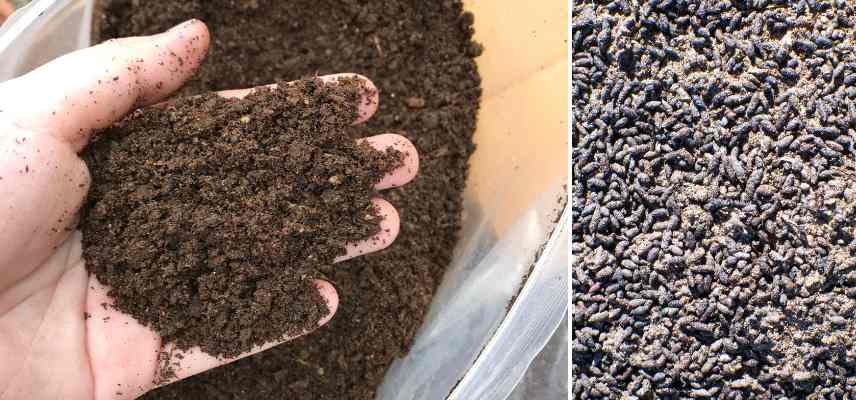
Bat guano
Green Manures
Finally, let’s mention green manures, which are plants sown on a plot to modify its structure and fertility. Once fully grown, these plants are cut and worked into the soil to provide specific nutrients. They are mainly used in vegetable gardens.
Among the many useful green manures are leguminous plants that fix nitrogen in the soil: vetch, mustard, phacelia, alfalfa, etc.

When and how to use it?
The use of organic amendments depends on several factors, including the type of soil and the specific needs of certain plants. The application period is particularly crucial. Here are some practical tips for optimal results:
-
Application period: Manures and most amendments are generally spread on the soil in autumn (essential for fresh manure), allowing them to break down, compost, and slowly nourish the soil, while compost is preferably spread in a thick layer at the end of winter. Dead leaves and straw can be applied at different times depending on the soil’s needs. Manure decomposed for at least 5 months should be spread at the end of winter.
-
Application methods: either incorporate the amendment directly by digging it into the soil with a rake if it is mature, or simply spread it on the surface, in which case, work on moistened soil. In the first case, place shovel-loads of material on the soil. Then, just rake the soil in spring to roughly mix the amendment with the top layer of earth. Repeat the process annually or every two years by adding a new layer if your soil requires it.
- For planting perennials, trees, and bushes: adding compost or leaf mould boosts the plant. It ensures good nutrition for the months ahead.
-
Practical tips: it is important to store organic amendments in dry conditions to prevent the proliferation of unwanted microorganisms. Most amendments should be combined with compost.
- Dosage: see our table below, as quantities vary depending on the type of amendment. Always refer to the dosages on commercially sold amendment packages.

Rake the soil to easily incorporate the amendment
Dosage should be tailored to the specific needs of the soil and the type of plants. Here is a summary table to determine the required quantity of amendment based on soil type and its effects:
| Type of amendment | Quantity/m2 | Soil type | Effects |
| Well-decomposed compost | 2 to 5 kg/m2 | All soil types | Improves soil structure, increases water retention, promotes microbial activity, and adds organic matter |
| Manure | 1 to 5 kg/m2 (fresh) = + 1 wheelbarrow
2 to 8 kg/m2 (decomposed) 1 kg/m2 (dehydrated) |
Soils poor in humus, clayey or sandy | Enriches soil with nutrients, improves structure, promotes plant growth |
| Straw or hay | 5 cm thick | Heavy, clayey soils | Improves aeration, increases organic matter, protects soil from erosion |
| Leaf mould | 2 kg/m2 | Soils poor in humus or compact and acidic | Improves structure, water and nutrient retention, adds organic matter to poor soils, and promotes microbial life |
| Dead leaves | 5 to 10 cm thick | All soil types, including acidic soils | Enriches soil with organic matter, improves structure, enhances water retention. |
| BRF or wood chip mulch | 3-5 cm thick | All soil types | Improves soil structure, promotes microbial activity, increases water retention. |
| Seaweed extracts | 1-2 litres | All soil types | Enriches soil with minerals and trace elements, stimulates plant growth. |
| Guano | 100-200 g | Nutrient-poor soils | Very rich in phosphorus and nitrogen, strongly stimulates plant growth. |
- Subscribe!
- Contents
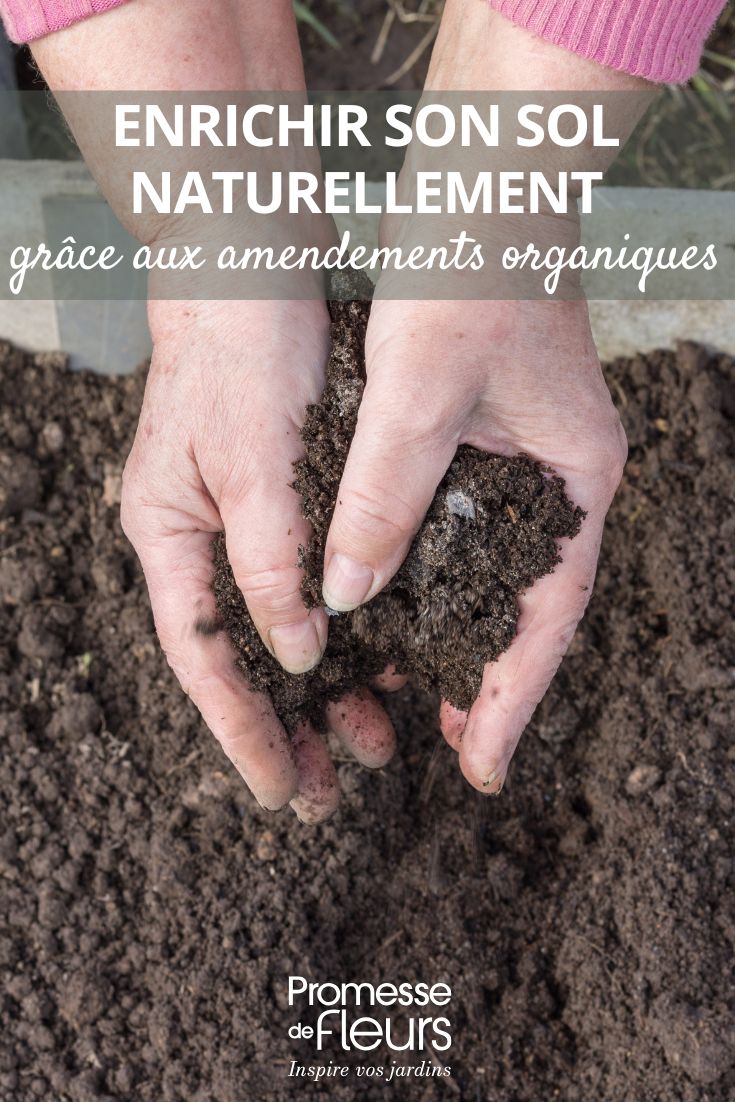































Comments